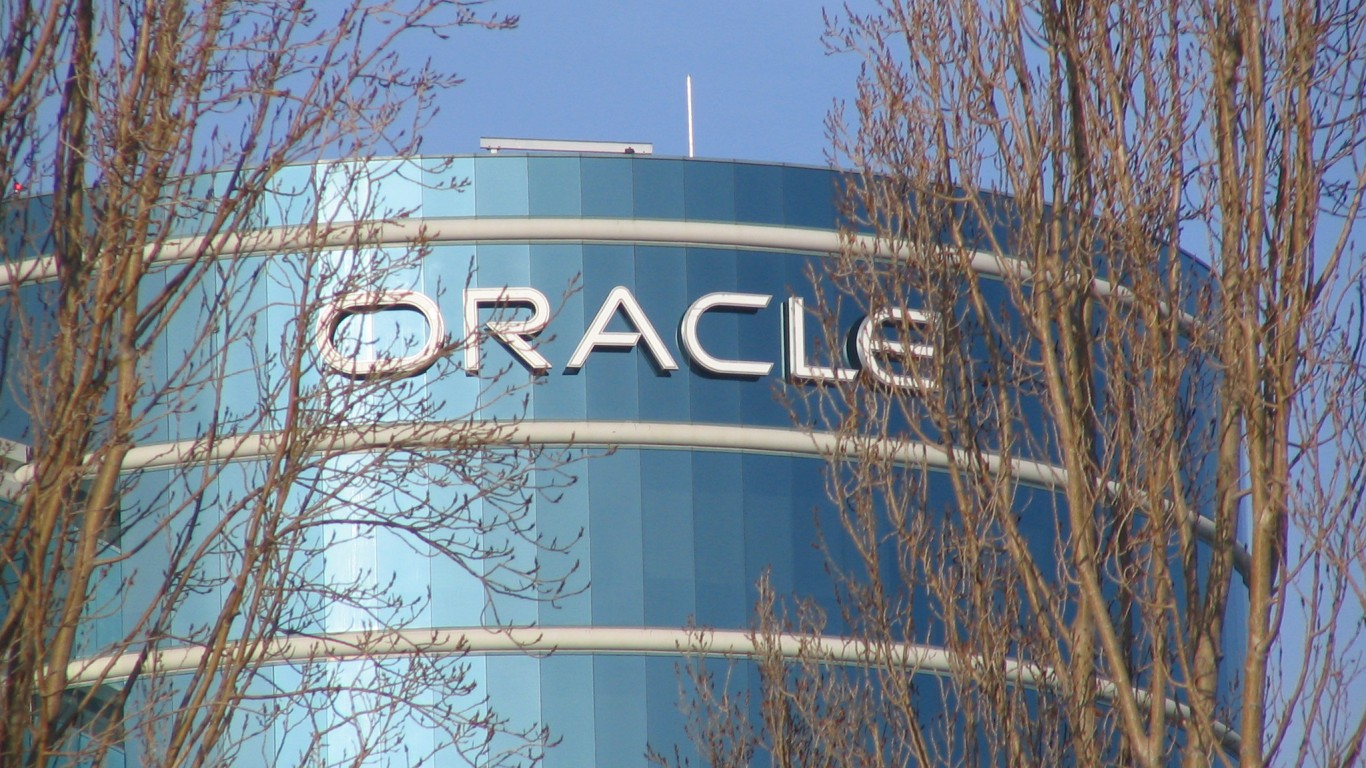
The three major U.S. equity indexes closed higher on Thursday. The Dow Jones industrials ended the day up 0.55%, the S&P 500 closed 0.75% higher and the Nasdaq ended 1.13% higher. Nine of 11 sectors closed higher, with technology (1.59%) and consumer cyclicals (1.05%) gaining the most. Communication services (−0.5%) and energy (−0.27%) lagged.
The Bureau of Labor Statistics released its report on the producer price index (PPI) for November Friday morning. Economists expected the index to rise by 0.2%, as it did in October, but it came in hotter at 0.3%. Core PPI also was expected to rise by 0.2% but rose to 0.4%. The November levels were lower year over year, however. The University of Michigan consumer sentiment index is forecast to rise slightly, from 56.8 in November to 57.0 in the December preliminary report.
The three major indexes opened lower on Friday.
After U.S. markets closed Thursday, DocuSign beat the consensus earnings per share (EPS) estimate by nearly 36% and also topped the revenue estimate. The firm issued downside revenue guidance for the fourth quarter on forecast billings of $705 to $715 million and an adjusted operating margin of 20% to 22%. Shares traded up more than 11% Friday morning.
Costco missed consensus estimates on both the top and bottom lines. Revenue rose 8.1% year over year, and same-store sales (excluding gasoline sales) were up 7.1%. Online sales fell 3.7% year over year, and comparable e-commerce sales were down 2%. Shares traded down 1.5% early Friday.
Broadcom beat top-line and bottom-line estimates and raised current quarter guidance. The company also has reinstated its share buyback program, in which about $13 billion remains, and raised its annual dividend by $2.00 to $18.40 (yield of around 3.3%). Shares traded up 2.6%.
Chewy beat both top-line and bottom-line estimates, putting up EPS of $0.01 when analysts were looking for a loss of $0.06 per share. The company issued upside guidance for both the fourth quarter and the full fiscal year. The stock traded down 5.8%.
Lululemon beat estimates on both the top and bottom lines. Same-store sales rose 14%, while e-commerce sales rose 31%. Combined, comparable sales rose 22% year over year. High inventory levels and a weaker-than-expected outlook for the current quarter, however, had shares trading down more than 9% early Friday.
Manchester United missed the consensus EPS estimate by nearly £6.00 while revenue rose by 13.6% year over year. The stock traded up about 2%, likely due to the club’s confirmation that the Glazer family may, in fact, sell the team.
Before markets opened on Friday, Li Auto missed consensus EPS and revenue estimates, and its president resigned effective January 1. The company said it expects to deliver 45,000 to 48,000 vehicles during its fourth fiscal quarter, a year-over-year increase of about 28% to 36%. Shares traded down 8% early Friday.
Here is a preview of three companies set to report quarterly results after U.S. markets close Monday afternoon.
Coupa Software
Shares of cloud-based business spending management vendor Coupa Software Inc. (NASDAQ: COUP) have dropped by nearly 61% over the past 12 months. That decline includes a gain of more than 45% since early November, when the shares posted a new 52-week low. A potential acquisition of Coupa by private equity firm Vista was reported about two weeks ago, sending shares up more than 30% in a heartbeat. Now, investors are waiting to see if a deal gets done.
Of 31 brokerages covering the company, 13 have a Buy or Strong Buy rating and another 13 have Hold ratings. At a recent share price of around $63.70, the upside potential based on a median price target of $70.00 is 9.9%. At the high price target of $108.00, the upside potential is 69.5%.
Third-quarter revenue is forecast at $213.31 million, which would be up 3.9% sequentially but down 14.8% year over year. Adjusted EPS are forecast at $0.10, down 49.1% sequentially and 67.7% lower year over year. For the full 2023 fiscal year ending in January, Coupa is expected to post EPS of $0.43, down 48.8%, on sales of $841.78 million, up 16.1%.
Coupa trades at 149.8 times expected 2023 EPS, 97.0 times estimated 2024 earnings of $0.66 and 62.6 times estimated 2025 earnings of $1.02 per share. The stock’s 52-week trading range is $40.30 to $176.63. Coupa does not pay a dividend. Total shareholder return for the past year is negative 60.9%.
Fluence Energy
Energy storage maker Fluence Energy Inc. (NASDAQ: FLNC) has seen its share price decline by about 51% over the past 12 months. The good news is that since posting a 52-week low in mid-May, the share price has risen by nearly 58%. A big part of that, of course, was the result of the Inflation Reduction Act’s support for clean energy.
Fluence, a joint venture between Siemens and AES, makes long-duration energy storage (LDES) products, a market that has received some $58 billion in new orders over the past three years. As of mid-October, the company had installed more than 5 gigawatts of its energy storage products worldwide, including more than 1 gigawatt in California alone. Fluence raised $1 billion in its September 2021 IPO.
Of 18 brokerages covering Fluence, 11 have a Buy or Strong Buy rating and six rate the stock at Hold. At a share price of around $15.30, the upside potential based on a median price target of $23.00 is 50.3%. At the high price target of $39.00, the upside potential is almost 155%.
Fourth-quarter revenue is forecast at $369.99 million, up 50.6% sequentially and by 92.3% year over year. Analysts are forecasting a loss per share of $0.28, much less than the prior quarter’s loss of $0.86, but more than double the year-ago loss of $0.13 in the fourth quarter. For the full 2023 fiscal year that ended in September, Fluence is expected to post a loss per share of $1.24, up from a loss in the prior year of $0.59, on sales of $1.1 billion, up 61.2%.
The company is not expected to post a profit in 2024, and its sales to EPS multiple for 2025 is 68.8 times expected earnings of $0.22 per share. The stock’s 52-week range is $4.96 to $36.70, and Fluence does not pay a dividend. Total shareholder return for the past year is negative 51.2%.
Oracle
Software and cloud-computing giant Oracle Corp. (NYSE: ORCL) has dropped about 9.8% from its share price over the past 12 months. Since reaching an all-time high in mid-December of last year, the share price has dropped by nearly 25%.
On Thursday, the Pentagon announced that Oracle, Microsoft and Amazon would share in a contract valued at around $9 billion to build the U.S. Defense Department’s Joint Warfighting Cloud Capability (JWCC), the successor to the $10 billion Joint Enterprise Defense Infrastructure (JEDI) modernization product that was awarded to Microsoft in 2019 and scrapped last year by the Biden administration after Oracle and Amazon protested the award. Stay tuned.
Of 31 analysts covering the stock, 10 have a Buy or Strong Buy rating and 19 have Hold ratings. At a share price of around $80.10, the upside potential based on a median price target of $82.50 is about 3%. At the high price target of $120.00, the upside potential is 49.8%.
Fiscal second-quarter revenue is forecast at $12.01 billion, up 5% sequentially and 15.9% higher year over year. Adjusted EPS are pegged at $1.17, up 14.1% sequentially and down 3.3% year over year. For the full 2023 fiscal year ending in May, current estimates call for EPS of $4.96, up 1.3%, on sales of $49.44 billion, up 16.5%. Oracle completed its $28 billion acquisition of Cerner in June, helping to account for its overall sales growth for the current fiscal year.
Oracle stock trades at 16.1 times expected 2023 EPS, 14.2 times estimated 2024 earnings of $5.65 and 12.1 times estimated 2025 earnings of $6.61 per share. The stock’s 52-week range is $60.78 to $106.34. The company pays an annual dividend of $1.28 (yield of 1.62%). Total shareholder return for the past year is negative 8.2%.
In 20 Years, I Haven’t Seen A Cash Back Card This Good
After two decades of reviewing financial products I haven’t seen anything like this. Credit card companies are at war, handing out free rewards and benefits to win the best customers.
A good cash back card can be worth thousands of dollars a year in free money, not to mention other perks like travel, insurance, and access to fancy lounges.
Our top pick today pays up to 5% cash back, a $200 bonus on top, and $0 annual fee. Click here to apply before they stop offering rewards this generous.
Flywheel Publishing has partnered with CardRatings for our coverage of credit card products. Flywheel Publishing and CardRatings may receive a commission from card issuers.
Thank you for reading! Have some feedback for us?
Contact the 24/7 Wall St. editorial team.

 24/7 Wall St.
24/7 Wall St. 24/7 Wall St.
24/7 Wall St.



